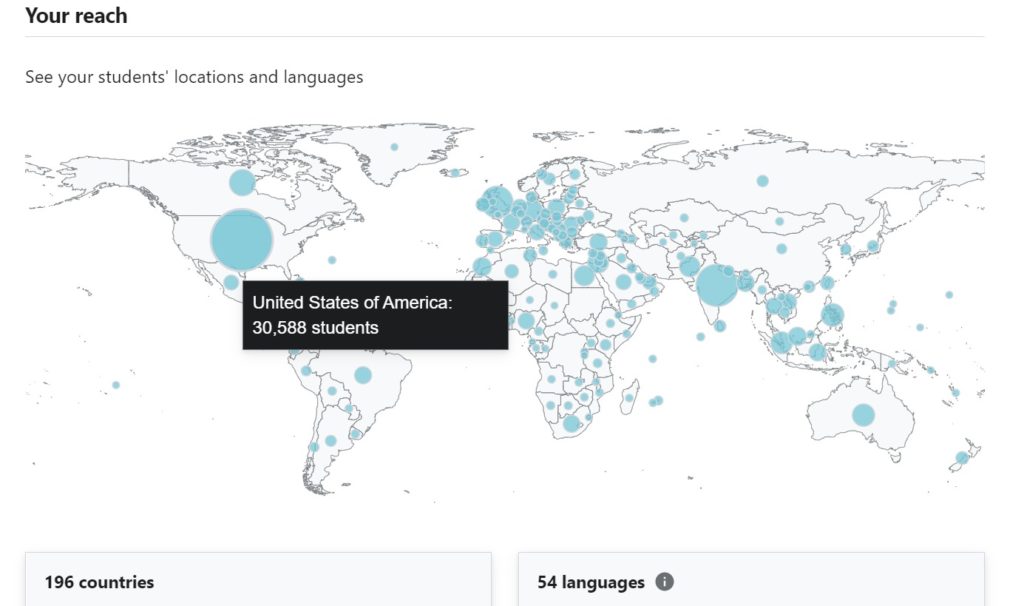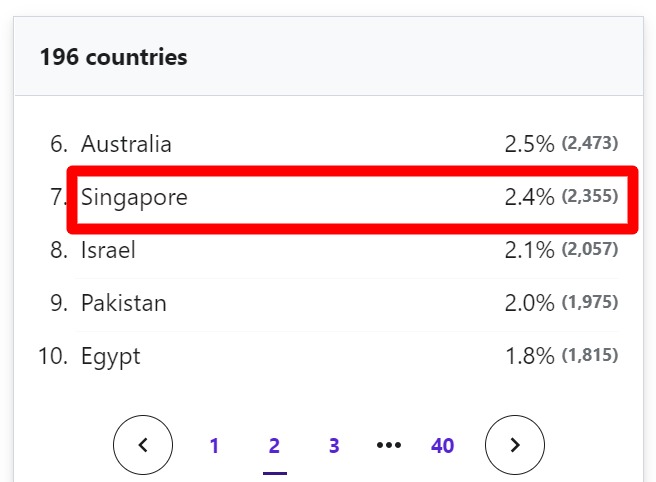I have been selling courses online since 2014 and I have never regretted doing so. If you are seriously considering selling your own courses online, then read on, I have some tips and experiences to share with you.
I used to conduct physical workshops teaching people how to create websites and market their websites between 2009 to 2014.

One of my workshops conducted in Singapore on the topic of ecommerce.
During those 6 years, I enjoyed the interactions with the students but periodically, someone will come up to me and ask me why don’t I create online videos based on the lessons I teach so they (the students) can watch and learn from their home.
Initially, I did not consider going online as a viable option as most people I come across still like to have classroom interactions. It was until 2014 that I start to consider this seriously because I wanted to reach out to more people make my training available to anyone who wants to learn.
After all these years of selling my courses online, I can say that not only it has totally changed how I work, I also enjoy it more!
I am grateful to all my learners online from many different countries and in this post, I will attempt to guide you to start making a full-time income too!

Most of my learners come from the United States (30.8% of the total learners).
It was only when I started selling courses online, then I realized the numerous benefits. I am listing these benefits below so that when you hit some challenges along the way, think of them and let them motivate you to push on!
1st advantage: No date and time limitations
When I was conducting physical classes, there are people who will not be able to make it to my classes either due to the date or the time of the class. This is very common and hence, we would have a few different dates to suit different groups of people.
By putting my courses online, anyone can watch and learn along the way based on their own time and availability!
Therefore, if you are selling your courses online, make sure to make them available to anyone 24/7. The best scenario is the learners are allowed to take your online course with a mobile device anywhere they go!
2nd advantage: No space limitations
When I was running physical workshops, some classes were oversubscribed and we couldn’t find a bigger space to cater to all the learners at the same time. This is frustrating for the learners and us, as the organizers.
When running physical workshops, the size of the group is limited to the size of the classroom that you have rented. On one hand, you don’t want to have a class that has too many empty seats, on the other hand, you also don’t want to have a classroom that can’t fit in all the participants.
But this is no longer an issue if you sell your courses online, because there is no space limitation as each learner will learn from his/her home or workplace. You can sell your courses to as many people as you can imagine!
3rd advantage: Low cost for you and the learners
To learners, online courses are mostly more affordable than attending physical courses. I used to sell a website creation workshop for SGD$200 per person. But now, it only costs US$20 for someone to sign up for my online website creation course. This is clearly an advantage for all learners.
It is also less costly to produce an online course than to rent a classroom and deliver a one-time course. The following is all I need to record my courses and sell online:
- Yeti Microphone
- Screencast-o-matic (screen recording software)
- And other free tools!
4th advantage: Speed of content update
Another advantage of selling online courses is that whenever you have new updates to the materials you teach, it is very easy for you to add or replace existing lessons and then inform your learners online.
In the past, I have learners who have attended my previous physical workshops requesting to re-attend the newer ones to refresh what they have learned. Imagine if every learner comes back to you just to re-learn or refresh what they learned in the past! Thus, online courses are very much efficient in this aspect!
5th advantage: Global reach
This is quite obvious because once you start selling courses online, people from any part of the world can buy your courses.
Today, most of my online courses are attended by people outside of my country, Singapore. Only 2.4% (about 2,000+ learners) come from Singapore.

Only 2.4% of my learners come from Singapore.
You will be able to reach out to more people when you start to sell your courses online!
So are you ready?
The following are the three steps you can take to begin this exciting journey!
1. Where to sell your online courses
Nowadays, there are many online platforms that you can use to sell your online courses. But not many are truly profitable at the end of the day.
There are three areas you need to consider when choosing a platform to sell your online courses.
Number 1 consideration: Will the platform market the online courses for you?
Many learning platforms like teachable, thinkific and learnworlds do not market your online courses.
Their role is just to help you host your online courses and you need to market the online courses yourself 100%. Unless you are currently an experienced Trainer or Instructor and you already have knowledge in marketing your courses online, else it is a very difficult (& time-consuming) thing to market your own courses!
Thus, it is better to choose a platform that will help you market your courses like Udemy.
From what I know, there are currently two platforms I know of that help you host and market your courses, they are Udemy.com and Skillshare.com.
Number 2 consideration: How many learners the platform has?
The second area you need to consider is the number of learners that are currently enrolled in the platform.
Udemy (as of the time of writing this blog post) has 40 Million learners.
Skillshare has a much smaller number of learners but has a good potential for niche audience in the art and craft domain.
Number 3 consideration: How easy it is to sign up as an Instructor with the platform?
The final area to consider is how easy it is to sign up as an Instructor to start selling your online courses at these platforms.
Platforms such as Coursera and Udacity only work with professors/teachers informal institutions. So it is not easy to sell your online courses on these platforms.
The easiest platform to get started is Udemy, they do not require you to be officially certified in the topic you teach. And they allow anyone to start selling your courses after some simple identity verification.
In conclusion, I strongly recommend you to start selling your online courses at Udemy, especially since this is your first time doing so online.
2. What to sell?
After you decided which platform to sell your online courses, now you need to decide what topic to teach.
You can watch the video below for some ideas:
3. How to sell?
Once you know what topic to teach, you can follow the steps below as a guide to complete your online course:
- Plan your course title.
- Plan your course curriculum.
- Record your courses using a professional microphone and camera (or screencast software if you are showing slides instead of your face).
- Upload the lessons and slides to Udemy.
- Get it approved by Udemy!
I hope you find this post useful and I wish you all the best in selling your courses online!
